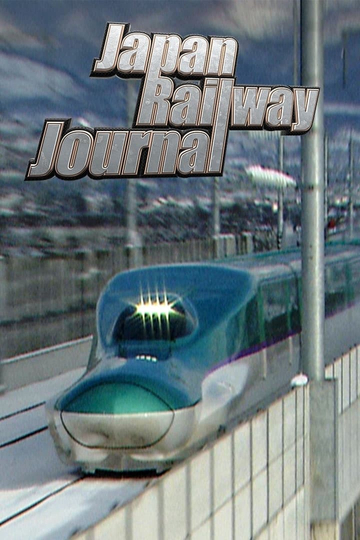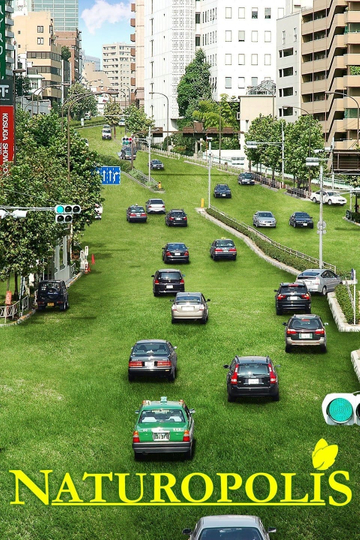Season 8 Episodes
1. Must-see Railway News: The Latter Half of 2021
See railway-related news from across Japan, covered by NHK from July to December 2021. Join us as we take a look back at post-pandemic measures implemented by railway companies, fun tourist trains, as well as new trains, and say goodbye to some beloved old trains.
2. Ekiben: Making a Comeback
Ekiben (a word that combines the Japanese words for station and boxed meal) are sold at stations and on trains throughout Japan. Unfortunately, the coronavirus pandemic, which affected ridership on railways across Japan, including the shinkansen, severely affected the Ekiben industry as well. Concerned for their business, Ekiben manufacturers began looking for new ways to survive. See the ideas they've come up with, from frozen Ekiben and online sales, to expanding business overseas.
3. Konan Railway: Combating the Snow
Konan Railway operates in one of Japan's snowiest regions, Aomori Prefecture. For the people who live there, heavy snow is unavoidable. For the railway, clearing the snow is crucial to maintaining scheduled operations. To combat the snow, the railway uses a snowplow (which also doubles as a blower) and Japan's oldest active snowplow (a favorite among railfans). See how the railway combats the long, harsh winter and the various ways they tackle the snow.
4. Rebuilding Tohoku's Railway Network
On March 11, 2011, the Great East Japan Earthquake struck, causing severe damage to railways along the Pacific coast. Sanriku Railway in Iwate Prefecture resumed partial service just 5 days after the quake. JR East's Kesennuma Line and part of the Ofunato Line were replaced by BRT (Bus Rapid Transit), and the Joban Line (which runs through Yamamoto in Miyagi Prefecture) relocated its stations and tracks as the town moved inland. See the efforts on how Tohoku's rail network has been fully restored.
5. Trains Evolving by Design
In recent years, the Japanese railway industry has seen the introduction of many unique trains designed by famous designers. These new trains were made possible thanks to rolling stock manufacturers and parts suppliers coming together to meet the new design challenges. Also, not only new trains are created, but existing trains are transformed, such as JR Kyushu's Nishi Kyushu Shinkansen (scheduled to open in the fall of 2022), produced by an industrial designer. See how new design elements are causing Japanese trains to evolve.
6. Tobu Railway: Restoring a Steam Locomotive
Tobu Railway operates 12 routes in the greater Tokyo area and runs a tourist train pulled by SL Taiju steam locomotives in Tochigi Prefecture. Until now, Tobu Railway ran 2 steam locomotives, however, to enhance the operation of the popular train, the company decided to restore a museum condition steam locomotive from Hokkaido Prefecture. The restoration was expected to take 2 years, but the body was more damaged than they had anticipated. Half of the parts, including the boiler, needed to be rebuilt, which in total took 3 years. See all the work that was done for the first time in 47 years to restore the old iron horse.
7. Working on the Move by Rail
The pandemic has accelerated the trend of remote work and web conferences, but this has led to a decrease in commuting and business trips. To make a comeback, JR companies are offering share offices and spaces inside station facilities, and on the shinkansen (such as the Tokaido and Tohoku shinkansen), passengers can participate in online meetings and calls. Also, other railway companies are creating workspaces at stations located in residential areas. See how railway companies are coming up with unique ideas to meet the growing demand for new work styles and overcome these difficult times.
8. Speeding Toward Carbon-Free Railways
Japan has committed to becoming carbon neutral by 2050. To honor this commitment, Japan's railway companies have begun various initiatives to reduce greenhouse gas emissions. JR East is now testing a hydrogen hybrid train powered by fuel cells, and JR Central is working on a next-generation biodiesel fuel train. Other private railway companies have also begun using renewable energy sources to run their trains and stations. See how the railway industry is making things greener by researching and developing the latest technologies.
9. Must-see Railway News: The First Half of 2022
See railway-related news from across Japan, covered by NHK from January to June 2022. Join us as we look back at evolving railways, popular tourist and commemorative trains, the last run and a train given a second chance. For evolving railways, see the introduction of AI technology at Tokyu Railways's Jiyugaoka Station and automatic train operation on JR's Yamanote Line. Also, get a glimpse behind the scenes of railway operations and visit the unique 75-year-old salesperson at Yuri Kogen Railway's last stop - Yashima Station, who always brings a smile to visitors' faces.
10. Kosaka Railroad: A Second Chance for a Discontinued Railway
In recent years, there's been a move to utilize discontinued railways as tourism resources. Kosaka Railroad in Akita Prefecture (which connected Kosaka Town and Odate City) was used to transport ore and carry passengers before it was discontinued in 2009. Now, the 22km line is being used as rail park and playground facilities. See Kosaka Town and Odate City's efforts to turn the discontinued railway into fun tourist attractions.
11. Running a Luxury Tourist Train in Hokkaido
Since JR Kyushu's "Seven Stars in Kyushu" debuted in 2013, railway companies have seen trains as tourism resources and begun running luxury tourist trains. With their close ties to the region, tourist trains also help revitalize the areas in which they run. In 2020, Tokyu Corporation's "THE ROYAL EXPRESS" started operating on JR Hokkaido. See why and how Tokyu's luxury tourist train started running in Hokkaido Prefecture.
12. JR Okayama Branch: Using Old Trains to Attract Tourists
The Okayama Destination Campaign - one of Japan's most extensive tourism campaigns, ran in Okayama Prefecture from July to September 2022. During the campaign, there were many interactive events, but the highlight was the revival and operation of diesel trains owned by the Okayama Branch of JR West that originally ran on Japanese National Railways back in the day. In addition, a new tourist train created especially for the campaign made its debut. With the demand for travel on the rise, the local governments and tourism industry had high expectations for JR's Okayama Branch. See how the company used its old trains to attract visitors and the efforts of the mechanics who supported the campaign.
13. Yagan Railway: Surviving as a Connecting Line
Yagan Railway is a third-sector railway that started service in 1986, operating between Shin-fujiwara Station in Tochigi Prefecture and Aizukogen-ozeguchi Station in Fukushima Prefecture. Yagan Railway is located between Tobu Railway and Aizu Railway and is an essential connecting line for both railways to connect the Tokyo and the Aizu regions in Fukushima. However, Yagan Railway's sales have declined significantly due to the pandemic. See how the railway is trying to transform itself from a connecting line to a sightseeing route post-pandemic.
14. Nishi Kyushu Shinkansen: Half a Century Since Its Inception
One of the biggest news in the railway industry this year is the opening of JR Kyushu's Nishi Kyushu Shinkansen. Making its debut on September 23, the 66km line runs between Takeo-onsen Station in Saga Prefecture and Nagasaki Station in Nagasaki Prefecture. A major redeveloping project around Nagasaki Station is underway, creating excitement in the prefecture. Also, a new tourist train started service along with the shinkansen, and many tourists are expected to visit the area. On the other hand, the national government and Saga Prefecture are still discussing the development of a section east of Takeo-onsen Station that will connect to Fukuoka Prefecture, but no agreement has been made. See the new Nishi Kyushu Shinkansen and the regional revitalization of the line's opening.
15. JR Tadami Line: Back After 11 Years
The JR Tadami Line connecting Fukushima and Niigata Prefectures is known for its spectacular views. However, in July 2011, heavy rain washed away the bridges and tracks, resulting in the suspension of service on a section of the line. Discussions were held between local governments, which wanted to fully restore the railway, and JR East, which wanted to switch to bus services. After six years of discussions, both parties agreed to use the vertical separation system where Fukushima Prefecture and 17 local governments in the Aizu region will maintain and manage the railway facilities, and JR East will be responsible for the operations. The Tadami Line resumed full operation on October 1, 2022. See how the line was restored and the efforts for the Tadami Line to get back on track.
16. Exploring the Labyrinth That Is Tokyo Station
This year marks the 150th anniversary of Japan's railway system. Tokyo Station - the heart of the network is a hub station that provides access to various destinations. Tokyo Station is the first station for all Japanese railways, including Tokaido, Chuo, Sobu and Tohoku lines and Shinkansen. The red-brick Marunouchi station building, restored to its original appearance in 2012, includes a hotel and an art museum. The station is also home to a huge commercial complex where visitors can purchase ekiben and Tokyo souvenirs and enjoy delicious food. However, the vast Tokyo Station is a "labyrinth" for first-time visitors. See the history of Tokyo Station and how it evolves as a symbol of the capital city.
17. Reviewing the New Trains of 2022
Thirteen new trains, including express, commuter and tourist trains, made their debut in 2022. Compared to last year, many tourist trains started service despite the pandemic, such as trains that transformed the common area into a lounge and the entire car into a private room. Among express trains, JR Central's Series HC85 gained attention. It uses a hybrid system that combines electricity generated by a diesel engine and electricity stored in batteries. Also, subways and commuter trains with distinctive designs were introduced. Join us as we look back at Japan's latest trains and trends.






































